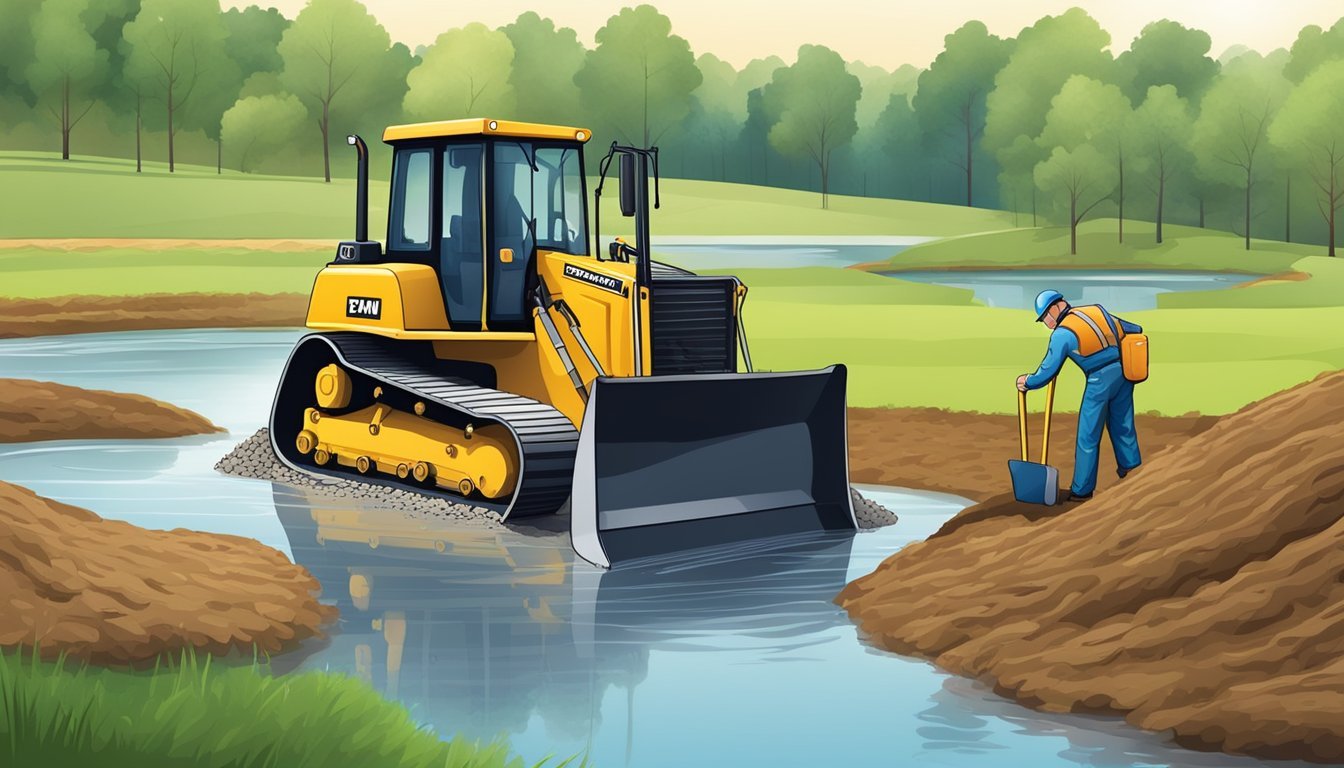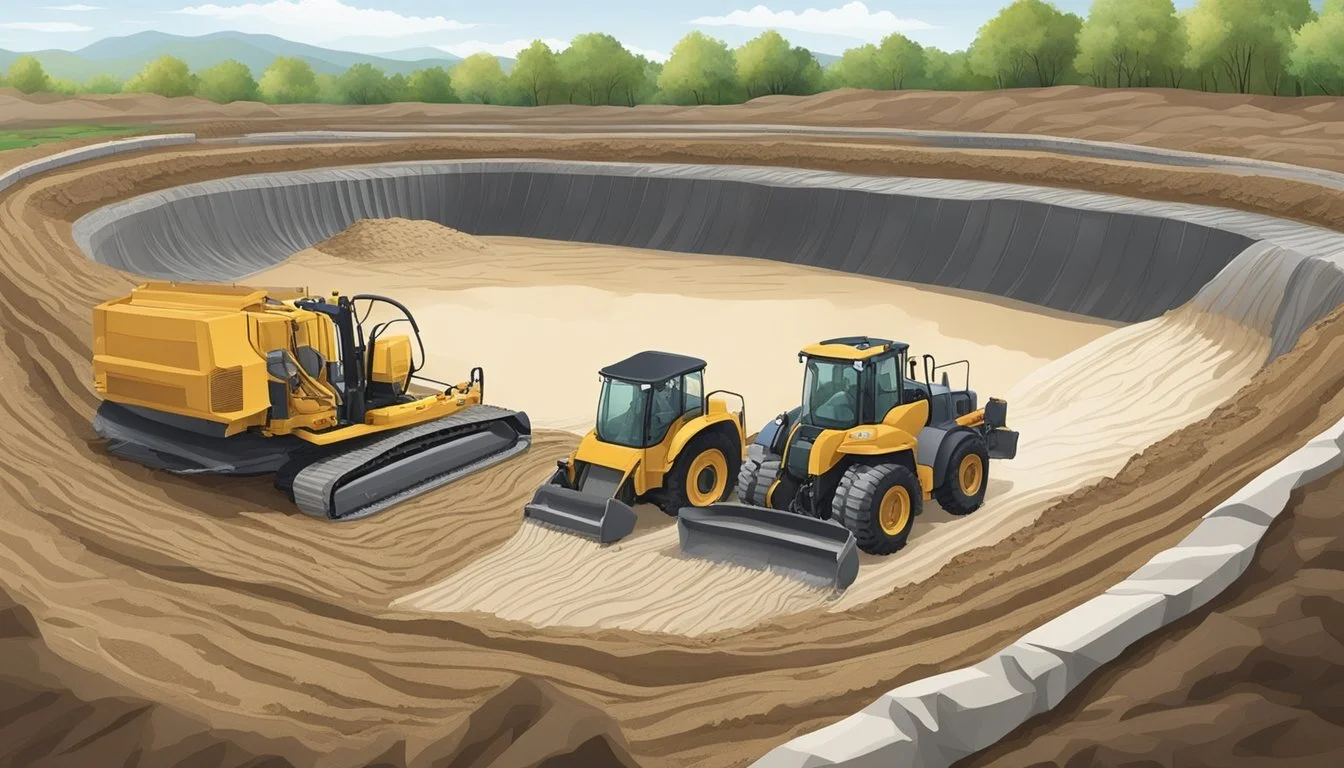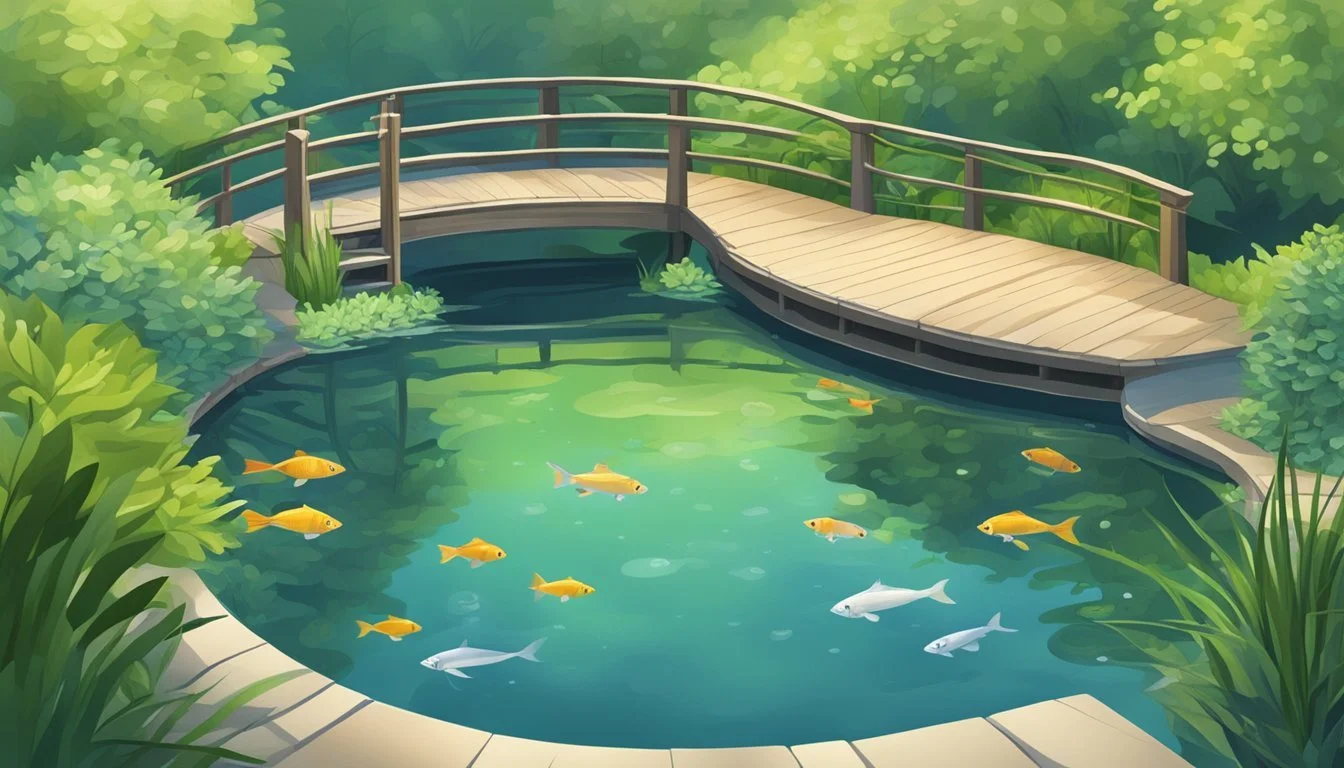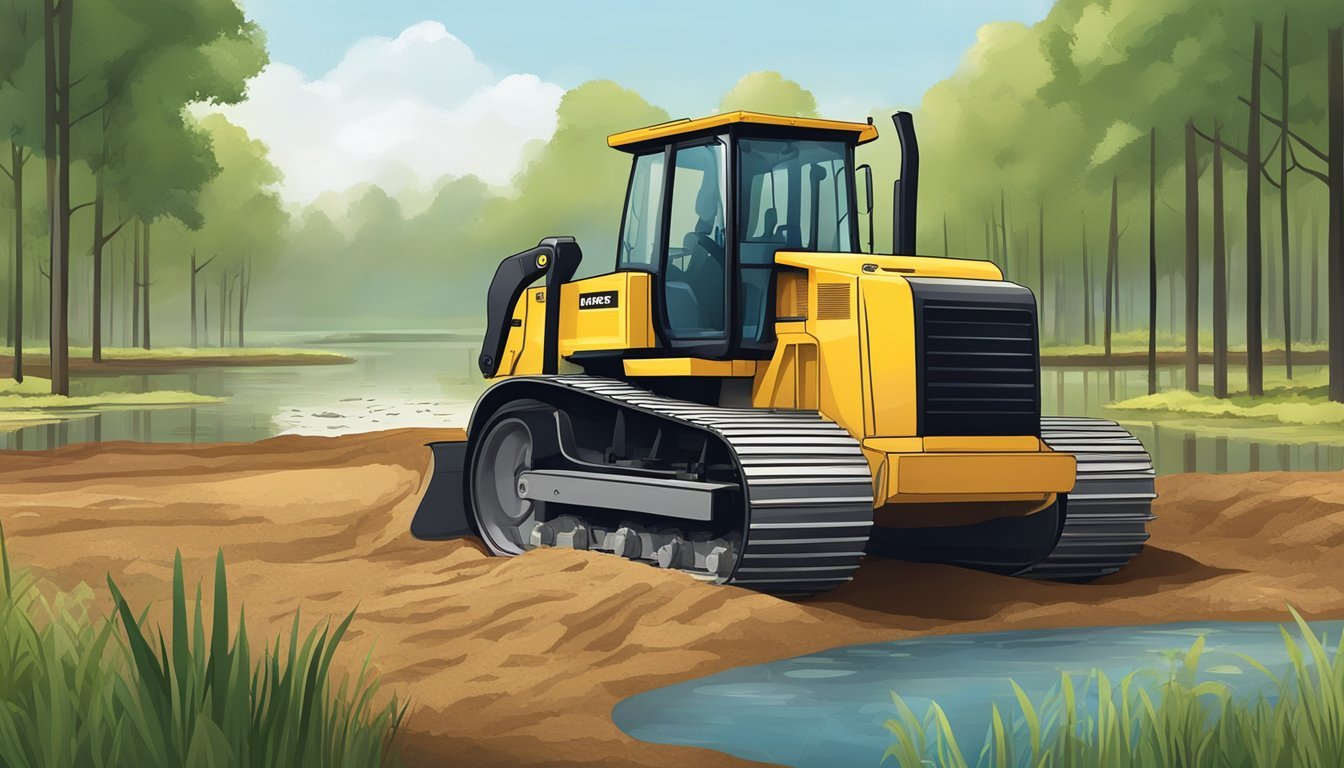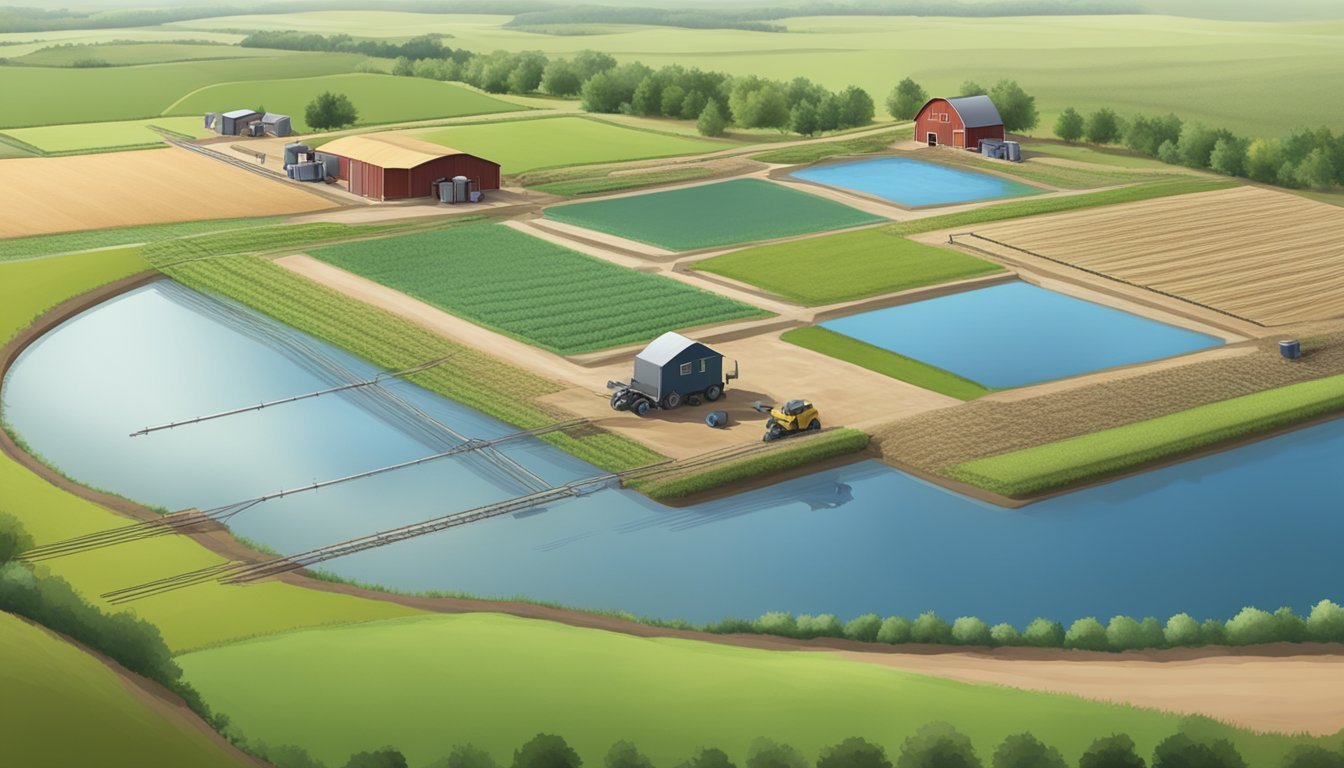What You Need to Know Before Starting Your Farm Pond Construction Project
Constructing a farm pond is a multifaceted project with numerous considerations that demand careful planning and informed decision-making. Before embarking on such a project, one must assess the intended purpose of the pond—be it for irrigation, water storage for livestock, recreation, or enhancing wildlife habitats. Key to this assessment is understanding the source of water that will feed the pond. Whether relying on surface runoff, a spring, or diverting a stream, the consistency and quality of the water source are critical for maintaining appropriate water levels and ensuring the environmental sustainability of the pond.
The foundation of a successful farm pond lies in the detailed analysis of the soil profile where the pond will be situated. Soil with a high clay content is ideal, as it naturally holds water and minimizes the risk of leaks. In cases where soil quality is suboptimal, strategies like applying bentonite clay or constructing a clay liner may be necessary to prevent seepage. Attention must be given to designing an adequate spillway that manages both routine outflow and the excess runoff from heavy rains, preventing possible overflow or destruction of the pond edges.
In addition to soil and water considerations, the design process also involves ensuring environmental conservation. Consulting with agencies such as the Soil and Water Conservation District or the Natural Resource Conservation Service can be beneficial in navigating regulations and accessing expertise in pond construction. The design must account for the pond's depth, contours, and maximum height of the dam or dike to support the intended uses, whether for fish stocking or supporting local wildlife. Clear and knowledgeable planning, fulfilled by a reputable pond construction contractor with the necessary heavy equipment, lays the groundwork for a long-lasting and functional farm pond.
Evaluating Your Site and Water Sources
Before embarking on a farm pond construction project, thorough site evaluation and understanding of water sources are crucial for a successful outcome.
Understanding Soil Types and Clay Content
When examining a site for pond construction, it is imperative to assess the soil type. The soil profile should predominantly contain clay to provide a natural barrier that prevents water from seeping out. A soil survey can offer insight into the soil composition. For soils low in clay content, options like bentonite clay or a synthetic clay liner may be necessary to achieve the required water retention.
Main soil types:
Sandy
Loamy
Clayey
Key considerations:
Permeability
Ability to support a pond basin
Overall soil health
Assessing the Watershed and Water Flow
The watershed refers to the area of land that drains water into the pond site. It is essential for the pond to have a continuous and clean water source, such as streams, groundwater, or spring water, to maintain water levels. The watershed size will determine the amount of surface runoff, especially during heavy rains, which affects both the water quality and the design elements like the size of the spillway.
Understanding water flow:
Surface water assessments
Groundwater reliability
Spring influence on water supply
Design implications:
Spillway size to handle excess water
Pond edge structuring for water levels
Planning for both dry and wet periods
Designing the Farm Pond
Designing a farm pond is a critical step that ensures the pond meets your specific needs, whether for irrigation, livestock, or recreation.
Creating the Right Pond Design for Your Needs
The design process begins with a clear understanding of the primary purpose of the pond. A recreational pond might prioritize aesthetic considerations and water clarity, while a pond for agricultural purposes would focus on water storage and supply, ensuring it can meet the demands of irrigation or provide a consistent water source for livestock. Surface runoff, spring water, and groundwater are common sources to consider, but reliability during dry seasons must be evaluated. Properly designed agricultural ponds minimize water losses and maintain suitable water levels throughout the year. A recreational pond, on the other hand, might require additional features like a fishing dock or specific bank structures conducive to wildlife habitat.
Important Considerations:
Primary Use: Recreation, agriculture, wildlife support.
Water Source: Surface runoff, groundwater, nearby streams.
Water Quality: Clarity for fish and recreation, nutrient content for agriculture.
Water Supply Stability: Adequate during droughts, heavy rains.
Determining Size and Depth for Your Pond
The size and depth of a farm pond hinge on its intended use, water availability, and the local soil profile. For example, if the pond is primarily for livestock, it might need to be at least 3 feet deep to prevent freezing and ensure a year-round water supply. Deeper areas also promote healthier fish populations for recreation-based ponds. The local soil type, particularly clay content, influences both the depth and structural integrity of the pond. Soils must have sufficient clay to hold water or be amended with materials, such as bentonite clay, to reduce seepage.
Size and Depth Guidelines:
Livestock Pond: Minimum depth of 3 feet.
Recreational Pond: Varied depth zones; deeper areas for fish.
Soil Evaluation: Conduct soil surveys to assess clay content and suitability.
Capacity: Ensure the pond holds enough water for its intended purpose, accounting for evaporation and consumption.
Legal Considerations and Engineering
Before embarking on a farm pond construction project, it is essential to understand the legal requirements and involve skilled engineers. Ensuring compliance with regulations and obtaining the necessary permits can prevent costly mistakes during and after construction.
Understanding Local Regulations and Permits
Local regulations for pond construction vary by state and municipality. It is crucial to consult with your local soil and water conservation district or the Natural Resource Conservation Service (NRCS) to understand the specific legal requirements. These can include aspects like:
Water source assessment: Determining if the water supply for the pond, whether it's spring water, surface runoff, or a natural body of water, meets legal standards.
Water levels and excess water management: Ensuring the pond design includes an adequate spillway for heavy rains and excess runoff.
Soil suitability: Conducting soil surveys to confirm that the site has sufficient clay content or if bentonite clay might be needed to prevent a leaky pond.
Environmental conservation: Maintaining biological diversity and addressing environmental impact concerns, such as destruction of wildlife habitat or bacterial contamination.
It is also necessary to acquire the right building permits and ensure the pond construction aligns with standards set by entities such as the Environmental Protection Agency (EPA).
Consulting with Engineers and Experts
Hiring a professional engineer or consulting with experts with experience building ponds is indispensable to address the engineering aspects of pond construction. Key engineering concerns include:
Pond design and layout: A thorough plan that defines the pond edge, maximum height of the dike or dam, and safeguards soil and water quality.
Heavy equipment requirements: Determining the type and size of equipment needed, like a water truck or excavators.
Structural integrity: Ensuring the spillway and dam or dike construction are built to withstand water levels and potential excess water scenarios.
Adverse impacts: Avoiding environmental conservation issues through proper design process and construction practices.
By engaging experts, you can also benefit from their knowledge of basic requirements for livestock ponds, fishing ponds, and achieving water clarity.
Constructing the Dam and Pond Liner Installation
The successful creation of a farm pond hinges on constructing a robust dam and correctly installing a suitable pond liner. These elements are fundamental to ensuring water retention and the long-term integrity of the pond.
Building a Sturdy Dam
To build a dam that will endure, start by excavating a core trench along where the dam will be located. This trench should be at least 4 feet deep and continue down to a solid clay layer to prevent water seepage. Fill the trench with high-clay soil and compact it layer by layer, each around 6 inches thick, to form the dam. For optimal water management, particularly during heavy rains, establish an adequate spillway to handle excess water and install appropriate drainage to control surface runoff.
Excavate core trench to solid clay
Layer and compact high-clay soil
Install spillway and drainage
Choosing and Installing the Proper Pond Liner
Selecting the right pond liner is critical to prevent water loss and maintain the pond ecosystem. Bentonite clay or proprietary pond liners are common choices that provide a watertight barrier. The dimensions of the required liner are typically the pond’s dimensions plus twice the maximum depth plus an additional 2 feet on each side, ensuring full coverage. When installing, ensure that the soil is stable. Use heavy equipment as needed to maneuver the liner into position and then anchor it securely along the pond edge, avoiding any folds or wrinkles that might cause weakness.
Determine liner size: pond size + (2 * max depth) + 2 feet per side
Prepare and stabilize soil base
Position and anchor liner smoothly
By investing in the construction of a strong dam and the meticulous installation of a pond liner, pond owners lay the groundwork for a stable and sustainable aquatic habitat.
Fish Stocking and Management Strategies
Before delving into the construction of your farm pond, a clear plan for fish stocking and management strategies is critical to maintain a balanced, healthy aquatic environment.
Selecting Fish Species for Stocking
Choosing the right fish species is fundamental for a thriving pond ecosystem. Bass, catfish, and bluegill are popular choices, each serving a specific role in the pond’s food web. Bass, as top predators, can control the population of smaller fish, while catfish are bottom dwellers and help reduce excess nutrients. Bluegills serve as forage for bass and help keep algae in check. When determining stocking rates, consider the pond’s surface area and water volume, ensuring a habitat that supports the fish population without leading to overpopulation and poor water quality.
Bass: A predator that helps control the population of prey species.
Catfish: Prefers to inhabit the bottom and maintains balance in nutrient levels.
Bluegill: Act as forage for predator fish and assist in algae control.
It's important to source your fish from reputable hatcheries and to ensure fish are acclimated to the pond's temperature gradually.
Maintaining Water Quality and Fish Health
Water quality is paramount in fish management. Regularly monitor the pond’s pH levels, temperature, oxygen content, and clarity to ensure optimal conditions for fish health. Equip the pond with an adequate spillway to handle excess water during heavy rains and to prevent overflow and erosion at the pond edge. Utilize soil and water conservation practices to minimize the entry of surface runoff, which can carry pollutants and increase the likelihood of algae blooms and bacterial contamination.
Water Quality Metrics: pH, temperature, oxygen levels, clarity.
Spillways: Essential to manage surface water and excess runoff during heavy rains.
Implementing aquatic plants can also be beneficial, as they oxygenate the water and provide habitat for smaller aquatic creatures, which in turn can become food for fish. Strategically manage these plants to avoid overgrowth that could deplete oxygen levels and threaten fish health. In ponds with persistent cloudy water or difficult water quality problems, consider consulting with a specialist who can advise on treatments or adjustments, such as the use of bentonite clay for soil with low clay content to reduce water seepage.
With exact species selection and diligent attention to water quality, your farm pond can support a vibrant array of fish and contribute to local biological diversity and environmental conservation while providing recreational opportunities like fishing.
Pond Maintenance and Protection
Constructing a farm pond requires careful consideration of maintenance and protection to ensure long-term viability and effectiveness. Key to these endeavors are the control of vegetation and algae, and the implementation of measures to prevent erosion and pollution, which safeguard the ecological balance and the pond’s infrastructure.
Controlling Vegetation and Algae
Controlling vegetation and algae is crucial for maintaining water quality and ensuring that the pond ecosystem remains healthy. Excess vegetation, like hydrilla, can obstruct waterways, affecting recreational activities and disrupting the balance of the pond environment.
Mechanical Removal: Regularly clear out unwanted plants using manual or mechanical methods.
Biological Control: Introduce organisms that naturally feed on problem plants or algae.
Chemical Control: Utilize algaecides with caution, following environmental guidelines to avoid damaging the pond's biological diversity.
Preventative Measures: Place barley straw in the water, which, when decomposing, can inhibit new algae growth.
Implementing Erosion and Pollution Prevention
Effective erosion and pollution prevention practices protect the integrity of the pond structure and water quality. They are vital for the pond's role in soil and water conservation and for providing a consistent supply of clean water.
Erosion Control:
Utilize vegetation at the pond edge to stabilize soil.
Design ponds with adequate spillways to manage overflow, especially after heavy rains.
For heavily eroded areas, consider the use of heavy equipment to reshape and plant vegetation that can withstand wet soil conditions.
Pollution Mitigation:
Manage surface runoff to prevent contamination from pesticides and fertilizers.
Implement regular liming and fertilizing schedules in line with agricultural best practices.
Engage with your local Soil and Water Conservation District for guidance on minimizing adverse environmental impacts.
These maintenance and protection strategies will ensure your farm pond is a sustainable resource for water for livestock, irrigation, fire protection, and recreation while offering habitat for fish, wildlife, and promoting biological diversity.
Irrigation Support and Agricultural Benefits
Farm pond construction plays a pivotal role in supporting agricultural activities through effective water management for irrigation and proving essential water supply for livestock.
Incorporating Sustainability with Farming Practices
Developing a farm pond as a water source contributes significantly to sustainable agricultural practices. Ponds facilitate the storage of surface water and excess water, including surface runoff during heavy rains, which can later be used during dry spells. Soil and water conservation is enhanced as ponds help maintain consistent water levels in the soil profile, essential for diverse soil types. Additionally, an adequate design considers the natural soil profile and clay content to ensure water retention, often employing bentonite clay or a clay liner as sealing materials to prevent leaky basins.
Proper pond design reduces the chance of destruction of wildlife habitat and bacterial contamination, promoting biological diversity. It requires collaboration with soil and water conservation districts and adherence to recommendations from the Natural Resource Conservation Service to achieve optimal water quality and environmental conservation.
Optimizing Pond for Irrigation and Livestock
When considering pond construction for irrigation, farmers should ensure the pond basin is designed to be feet deep enough to keep water supply available for crops even during dry periods. Moreover, an adequate spillway and potentially an emergency spillway for managing excess runoff should be in place to prevent costly mistakes during heavy rainfall. Using heavy equipment sensibly allows for efficient shaping of the pond edge and pond basin to create an extensive pond that can support a myriad of purposes, including irrigation, livestock watering, and even aquaculture.
A pond crafted to supply water for livestock can support a variety of animals, such as cattle, and its shallow water zones can attract wildlife. Farmers must select the suitable type of pond – commonly either dug ponds or dike ponds – based on their primary usage. Dike pond construction usually involves the strategic piling of excavated soil to create a dike, with a specific focus on the maximum height to withstand fluctuations in water levels without spilling over the top. Pond construction contractors with experience building ponds for agricultural purposes can offer valuable insights into the design process and common steps necessary to develop a dependable source of water.
Cost Analysis and Budgeting for Your Pond
Before commencing your farm pond construction project, a comprehensive cost analysis and budgeting plan is essential. The scope and scale of your pond will significantly influence the budget required.
Building Costs The cost to construct a pond can vary widely, ranging from as low as $800 for small garden ponds to upwards of $80,000 for large, natural swimming ponds. The national average for a mid-sized backyard pond is around $7,400.
Size and Design The size of the pond and the complexity of the design are pivotal factors. A larger pond with a sophisticated design, involving features like waterfalls, will necessitate a higher budget. The cost per square foot can increase with complexity.
Pond Size: Small
Average Cost: $800 - $3,680
Pond Size: Mid-Sized
Average Cost: $3,680 - $14,500
Pond Size: Large/Natural Pool
Average Cost: up to $80,000
Materials and Equipment Materials such as clay or bentonite clay for lining, the right soil type with adequate clay content, and equipment for excavation are key expenses. Heavy equipment rental adds to the cost. The depth of the pond and the soil profile can also impact the amount of material needed.
Soil and Water Engaging with local soil and water conservation districts can provide valuable insights into water source and quality management. Whether sourcing from surface water, surface runoff, or groundwater, ensuring reliable supply and quality is critical for the purpose, be it for livestock watering, fish farming, or wildlife habitat.
Spillways and Water Management Adequate spillways are needed to handle excess water, especially during heavy rains. Emergency spillways are critical to prevent overtopping and destruction of the pond edge. Inadequate spillway design leads to costly mistakes and can have adverse impacts on water quality and wildlife.
Professional Services Engaging with a pond construction contractor or consulting services like the Natural Resource Conservation Service aids in navigating complex decisions about pond construction, such as complying with environmental conservation standards and ensuring biological diversity. This ensures a confident approach in creating a durable and functional pond.

